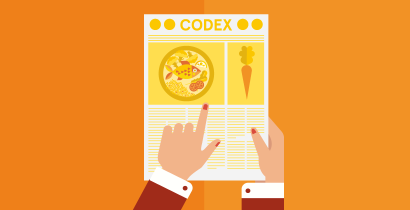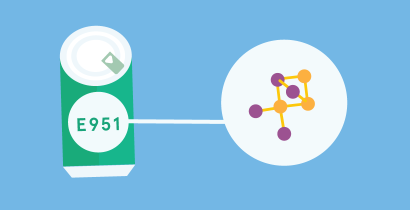Food production: Safe food in today’s global food chain
Last Updated : 27 October 2014Consumer expectations for safe, high-quality, and affordable food products are high. This article focuses on the efforts of all stakeholders in the food supply chain to ensure only safe and quality foods reach the market, and discusses the challenges of the complex global food supply chain.
What is food safety?
Food safety is a concept where ‘food will not harm the consumer so long as intended use guidelines are followed when it is prepared or eaten’.1 The food we eat is less exposed to certain hazards than in the past as risk management measures to prevent and control them have improved (e.g. through preservation methods such as pasteurisation, higher standards of hygiene, improved storage and shipping conditions and best practice use of agrochemicals).2,3
European response to food safety issues
The EU increased their focus on food and feed safety following major incidents such as the first confirmed cases of Bovine Spongiform Encephalopathy (“mad cow disease”) in UK in 1986, dioxin contamination of feed and food in Belgium (1999) and aflatoxins in pistachio nuts (1998).4,5 An integrated approach was developed focusing on risk assessment and new regulations were put in place mandating traceability, hygiene, hazard analysis critical control points (HACCP) and withdrawal of unsafe products from the market. A new independent European Food Safety Authority was established (2002) to support food and feed risk assessment.5-7 Food safety remains a top priority for governments and the private sector in Europe.
Food safety is a shared responsibility from farm to fork; it relies on the efforts of everyone involved in the food chain (agricultural production, processing, transport, food production and consumption). Food producers throughout the supply chain are obliged to operate effective food safety management systems (risk prevention systems), such as HACCP, good manufacturing practice (GMP) or good agricultural practice (GAP). This must be supported by pre-requisite programs, for example, staff training, effective cleaning and sanitation, allergen controls, pest control, ongoing monitoring and testing programs.8-10 Food safety audits ensure these practices are consistently and effectively carried out.1,11 Consumers also need to be aware of and practice food safety habits in their everyday lives (e.g. by following storage and cooking instructions, checking expiration dates on food and practising good kitchen and personal hygiene).
Benefits and drawbacks of the global food supply chain
The European food industry is not isolated, but rather it is part of a complex global supply chain, growing, processing and delivering food. This allows industry to provide fresh and affordable foods to the consumer all year round. For food producers, sourcing products internationally provides cost savings and a continuous supply of ingredients.
Alongside these advantages there are added complexities and challenges in ensuring food is hygienically and safely produced in geographically distant regions, and that it remains safe for consumption by the time it reaches consumers. Longer supply chains increase transport times, risk of damage, overall quality deterioration or even loss of goods in transit. Considerable efforts are needed to effectively trace products throughout these complex supply chains.7
Food fraud, an illegal practice often driven by financial interests, can be an additional challenge for food safety. While food fraud does not necessarily compromise the safety of the food, some food fraud incidents (e.g. adulteration of infant milk formula with melamine in China, 2008) have resulted in serious public health consequences. Other food fraud incidents illustrate vulnerabilities in the quality assurance systems of the supply chain (e.g. dilution of sunflower and olive oil with cheaper oils, undeclared blending of glucose syrup and honey, adulteration of beef products with cheaper meat and adulteration of Basmati rice with cheaper rice varieties). The European Commission have proposed an action plan to strengthen controls and tackle food fraud in Europe’s food supply chain.12-14
Food safety standards and practices
Since 1963, the Codex Alimentarius Commission has provided a series of international food standards (e.g. ‘General Standard for Food Additives’), guidelines (e.g. ‘Guidelines for Food Import Control Systems’) and codes of practice (e.g. ‘Code of Practice for the Prevention and Reduction of Aflatoxin Contamination in Tree Nuts’). Codex standards are often the basis for national legislation, which assists in the international harmonisation of food safety regulation and supports the aim to ensure ‘safe, good food for everyone – everywhere’.15-17
To be continued
In this article we have explained how food safety can be reliably assured through food safety management systems, measures to ensure effective controls, by the efforts of all those involved from farm to fork. In the next Food Today issue, we will discuss environmentally sustainable production, essential in a world with diminishing natural resources.
Further information
References
- ISO22000 Food Safety Management Systems ISO22000:2005 (en) online browsing platform.
- EUFIC (2006). Food safety. EUFIC The Basics no 6.
- EUFIC (2013). Food allergens. EUFIC Review.
- European Commission (2000). White paper on Food Safety.
- European Commission (2007). 50 years of Food Safety in the European Union.
- EUFIC (2011). Food safety controls in the European Union. EUFIC Food Today no 79.
- EUFIC (2014). Food traceability: cornerstone of EU food safety policy. EUFIC Food Today no 91.
- Stier RF (2012). Prerequisite Programs Help Ensure Safety and Meet Auditor Scrutiny, Food Safety Magazine.
- EUFIC (2013). HACCP and GHP: Standards in Food Industry
- FAO (Food and Agriculture Organization of the United Nations) website, Good Agricultural Practices.
- FAO (2010). Private food safety standards: their role in food safety regulation and their impact. Rome, Italy: FAO.
- Moore JC, Spink J & Lipp M (2012). Development and application of a database of food ingredient fraud and economically motivated adulteration from 1980 to 2010. Journal of Food Science 77(4):R118-R126.
- Johnson R (2014). Food fraud and “economically motivated adulteration” of food and food ingredients. USA: Congressional Research Service.
- EUFIC (2013). European Union Action Plan to tackle food fraud. EUFIC Food Today no 90.
- Codex Alimentarius website, Introduction section.
- Codex Alimentarius (2003). General principles of food hygiene. CAC/RCP 1-1969 Rev. 2003.
- Codex Alimentarius (2010) Code of practice for the prevention and reduction of aflatoxin contamination in tree nuts. CAC/RCP-2005 Rev. 2010.



